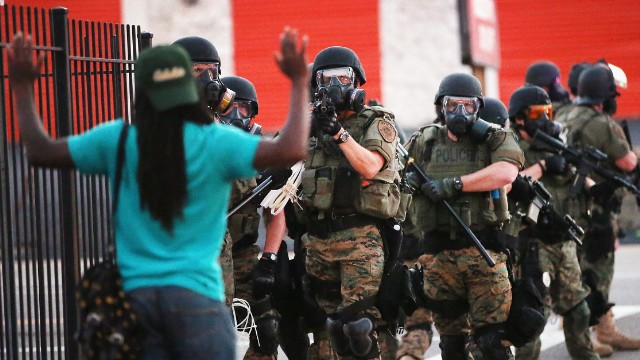

 I am White. I live in an upscale safe part of town walking
distance from a wine bar, two trendy restaurants, and a hip coffee
shop. In St. Louis, one of the most racially divided cities
in the country, this also means that where I live most everyone
else is White.
I am White. I live in an upscale safe part of town walking
distance from a wine bar, two trendy restaurants, and a hip coffee
shop. In St. Louis, one of the most racially divided cities
in the country, this also means that where I live most everyone
else is White. | The email I wish I’d sent (or some
variation). It was forwarded to me by a colleague at
Saint Louis University who is active in trying to
address issues of race and social justice. It is
used with permission of the author. Dear Friends, I spent much of last night wondering what it would be like to be an African American student coming to UMBC today. I wondered if it would be anything like how I felt as an Iranian person going to work on a university campus after the events on September 11th, 2001. I remember that time vividly, wondering how people were going to respond to me, if I would get dirty looks or snide comments. I remember feeling unsafe. I also remember feeling grateful that I was no longer a student, one rung up on a hierarchical ladder; no longer having to worry about the power dynamics in which college students live. Above all, I recall a close friend of mine who is African American and has a robust sense of humor coming to me, letting out a dramatic sigh of relief and saying, “Finally, I can catch a break today because America is too busy hating your people to worry about my being black.” We both laughed and I felt grateful for the love and support of a friend who understood. With many of our students being from the Baltimore area, I think it is important for us to reach out to let them as a department to let them know that we care. Regardless of their race, our students may or may not be identifying with recent events but the current state of Baltimore is the backdrop behind every interaction that is taking place on campus right now. As colleagues, I would ask that we all keep in mind that students may be feeling additional pressures as they prepare for their final exams this semester. If anyone on our campus is equipped to act with sensitivity and empathy, it is our department. So I encourage us to continue being role models for both our coworkers across campus as well as for our students who are looking up to us for cues on socially acceptable dialogue around the events taking place. I have reached out to the Counseling Center and they are meeting this morning to determine what additional services they would like to offer. I plan to hold additional office hours this week on Thursday and Friday evenings until 7pm for walk-in appointments. I will be sending out an email to our majors later today to offer support and information on available services. Best wishes, Darian Schiffman Academic Advisor University of Maryland, Baltimore Campus |